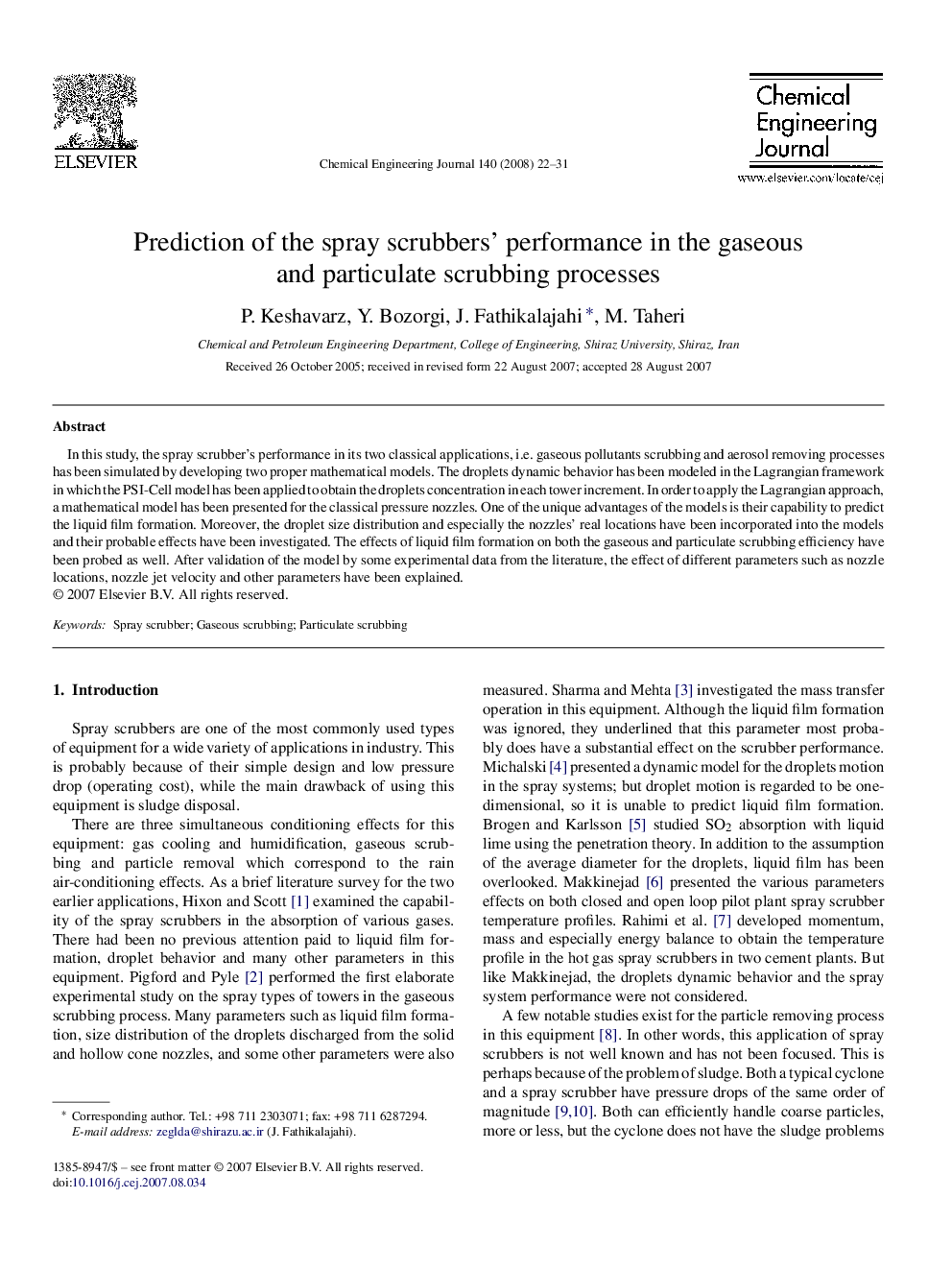| Article ID | Journal | Published Year | Pages | File Type |
|---|---|---|---|---|
| 153081 | Chemical Engineering Journal | 2008 | 10 Pages |
In this study, the spray scrubber's performance in its two classical applications, i.e. gaseous pollutants scrubbing and aerosol removing processes has been simulated by developing two proper mathematical models. The droplets dynamic behavior has been modeled in the Lagrangian framework in which the PSI-Cell model has been applied to obtain the droplets concentration in each tower increment. In order to apply the Lagrangian approach, a mathematical model has been presented for the classical pressure nozzles. One of the unique advantages of the models is their capability to predict the liquid film formation. Moreover, the droplet size distribution and especially the nozzles’ real locations have been incorporated into the models and their probable effects have been investigated. The effects of liquid film formation on both the gaseous and particulate scrubbing efficiency have been probed as well. After validation of the model by some experimental data from the literature, the effect of different parameters such as nozzle locations, nozzle jet velocity and other parameters have been explained.
